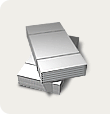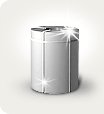The best time of the year to insulate the facade depends on the climatic conditions in your area. Usually the most suitable seasons for facade insulation work are spring and autumn.
Spring can be a good time to insulate your facade, especially if your area has cold winters. Carrying out work in the spring allows you to prepare the facade for a warmer period, when the effect of insulation will be most noticeable. In addition, spring is usually accompanied by more stable weather and less rainfall, which can make work easier.
Autumn is also a good time to insulate the facade, especially if your area has hot summers. At this time of the year, the air temperature is often stable and precipitation is less likely, which provides favorable conditions for insulation and subsequent finishing of the facade.
However, if the climatic conditions in your area are not very extreme, facade insulation can be carried out at any time of the year when the weather allows the work to be carried out without any special obstacles. It is important to take into account the weather forecast and choose a period when there are no severe frosts, strong winds or long periods of rain that can make work difficult.
It is recommended that you consult with local experts or construction companies to get more accurate recommendations, taking into account the specifics of your region and climate.
Which method of outdoor insulation is best for which season?
Each method of external insulation has its own characteristics and recommendations regarding the time of year. Here are a few common insulation methods and their respective season recommendations:
-
Insulation using foam and a reinforcing layer covered with plaster:
- Work is best done during warm, dry periods such as spring or autumn. High humidity or severe frosts can adversely affect the quality of the plaster layer.
- It is important to avoid working during rain or strong winds to prevent moisture from penetrating the insulation and damaging the materials.
-
Insulation using a ventilated facade system:
- This method allows you to work at any time of the year, but the installation of the system may require additional time and resources.
- When performing work in winter, take into account the temperature of the outside air and the possible formation of ice or frost. Some ventilated facade systems have additional ice protection measures, but it is still recommended to work in conditions where the risk of ice formation is minimal.
-
Insulation using sandwich panels or siding:
- These insulation methods can be carried out at any time of the year, provided that the weather conditions are not too extreme.
- Sandwich panel and siding work is relatively quick to complete and can be done at any time when there is no hard frost or long periods of rain.
It is important to consult with insulation specialists and follow the recommendations of manufacturers of specific materials and insulation systems. They can provide the most accurate recommendations tailored to your specific conditions and requirements.
Is it worth it to seal the seams when insulating the facade?
Yes, seam sealing is an important part of the facade insulation process and can be recommended. Sealing the joints helps to create more effective thermal insulation and prevent the penetration of moisture, drafts and dust into the structure of the facade. As a result, it can improve the energy efficiency of the building and create a more comfortable living or working environment inside.
Here are some advantages of sealing jointswhen insulating the facade:
-
Improved Thermal Insulation: Sealed joints help prevent cold air from entering and heat escaping from the building. This reduces energy losses and can improve the thermal insulation of the building.
-
Protection against moisture: Sealing the joints helps prevent moisture from penetrating the structure of the façade, which can be especially important in areas with high humidity or in the presence of precipitation. Moisture entering the interior of the façade can lead to material damage and mold or rot problems.
-
Improved sound insulation: Sealing the joints can help reduce sound transmission through the façade, resulting in a quieter and more comfortable atmosphere inside the building.
-
Improved Appearance: Sealing joints can help create a smoother and more uniform façade surface, improving its






